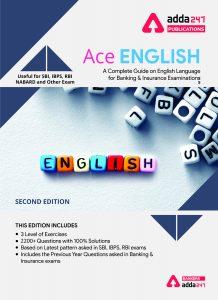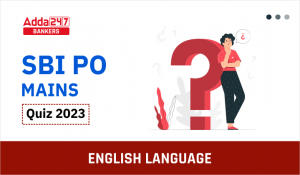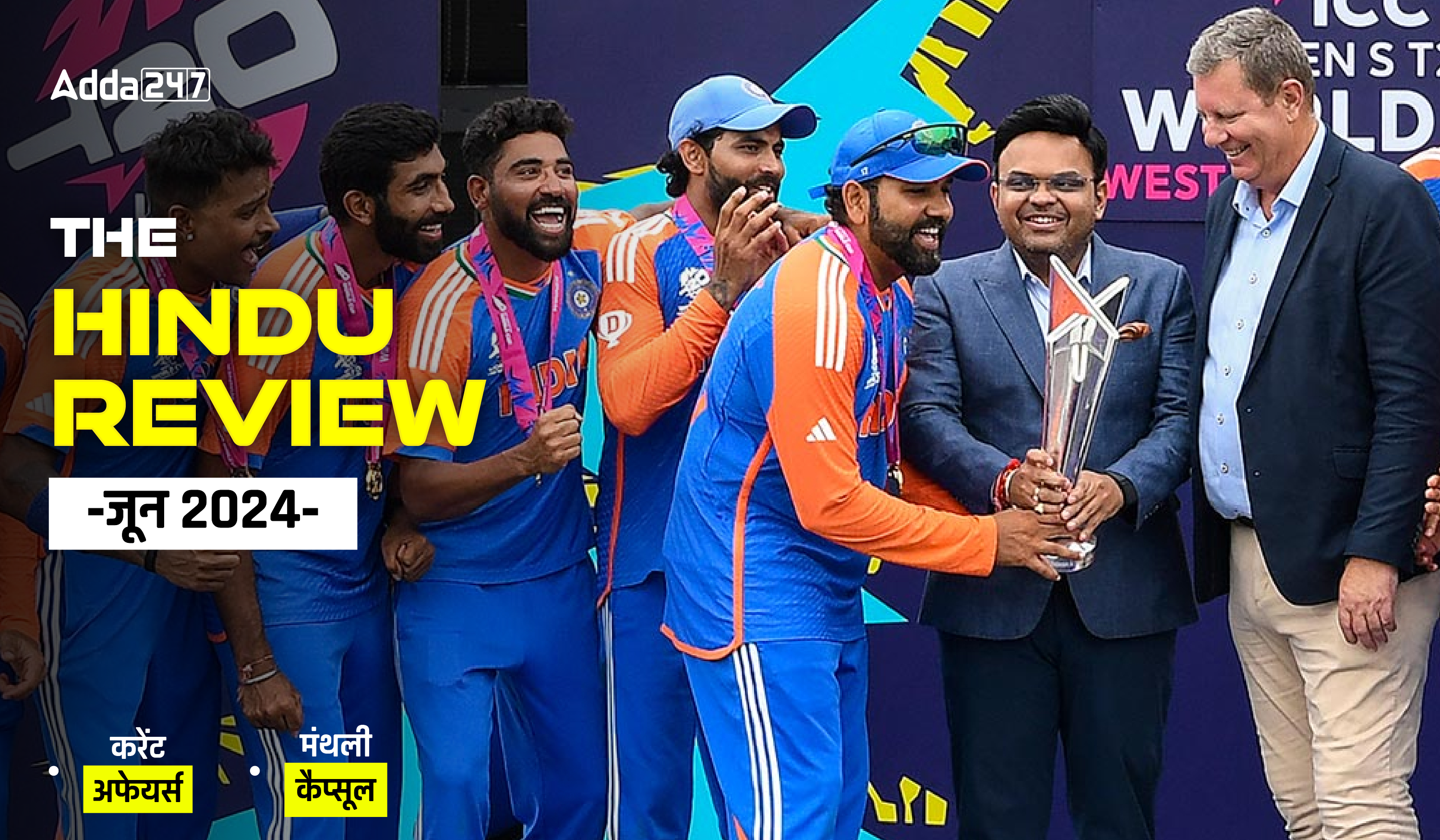
Directions
(1-5): Read the following passage and answer the following questions based on
the given passage.
Seldom
in the recent past has the impact of one month meant more in Indian foreign
policy than the present one.
And rarely have meetings on the sidelines around one summit carried as much
import on India’s future policies as the G-20 summit in Osaka , where Prime
Minister Narendra Modi will hold bilateral meetings with at least eight world
leaders, and participate in two parallel trilaterals, the Russia-India-China
(RIC) and Japan-U.S.-India (JAI). Two weeks ago, in June, he also held a
bilateral meeting with Chinese President Xi Jinping on the sidelines of the
Shanghai Cooperation Organisation (SCO) summit in Bishkek.
In a few months, he will meet the three
world leaders again for more substantive meetings: with a visit to Vladivostok,
a possible dash to Washington during the UN General Assembly, again in
September, and the Wuhan return-visit by Mr. Xi to India in October. Between
these two sets of meetings, Mr. Modi has his work cut out on a number of
issues, each of which represents a fork in the road, depending on India’s
decision on them: a fork where the U.S. holds one prong and the Russia-China
axis holds the other.
On trade, the tussle is evident. Many
in India had rejoiced when the U.S. first declared a trade war on China, given
India’s long-standing concerns about China’s unfair trade practices. However,
as Mr. Trump trained his guns on
India next, the joy evaporated, and choices for the Modi government changed. At
Osaka, Mr. Modi will meet Mr. Trump in an effort to give trade issues another
try, but he also plans to attend the RIC trilateral as well as a meeting with
leaders of BRICS, both of which will focus on countering the U.S.’s
“unilateralism” on trade. In the months ahead, New Delhi must make another
choice, on whether to sign up for the Regional Comprehensive Economic Partnership
(RCEP), a trade grouping that has taken Centre stage after the U.S. walked out
of the Trans-Pacific Partnership. If trade issues with the U.S., India’s
largest trading partner, remain intractable, it is not hard to see that the
RCEP bloc, with China in it, will become more prominent in India’s trade book.
The choice on energy, and in particular
on Iran, comes next. When the Trump administration pulled out of the Joint
Comprehensive Plan of Action (JCPOA) nuclear agreement in May 2018, but granted
India and a few other countries a waiver to continue oil imports, the
government had assumed it could muddle through the Iran-U.S. confrontation.
Instead, it has lost on both principle and profit. After accepting U.S.
sanctions on oil imports, India’s intake of cheaper, better Iranian crude will
dip from about 23.5 million tonnes in 2018-19 to zero in 2019-20. The waiver
for Chabahar port turned out to be a red herring as banks, shipping and
insurance companies have declined to support India-Afghan trade through the
Iranian port for fear of sanctions affecting their other businesses. What
follows now will be more difficult for New Delhi, as the U.S. has sanctioned
the top rungs of Iran’s government and the Islamic Revolutionary Guard Corps.
Having meekly submitted to U.S. sanctions, will India now also abjure contact with the Iranian
leadership or reject the U.S.’s demand? And where will India’s investments and
its dreams of larger connectivity via Chabahar and the Russian-led
International North-South Transport Corridor go, in the event of a full-scale
confrontation between the U.S. and Iran? Willy-nilly, the forks in the road are presenting themselves and choices must
be made.
In order to avoid such situations, it
is necessary to reject the “tactical transactionalism” that has currency today
for a more idealistic view of the world that India wishes to shape in the
future. It would be a mistake, as Australian Prime Minister Scott Morrison said
recently, if we become “nothing more than the sum of our deals”. It would be a
greater misfortune, however, to be trapped in the ‘zero sum’ of our deals.
Q1. As per the
context of the passage, which of the following statement(s) support(s) the
fact, ‘Seldom in the recent
…………. in Indian foreign policy than the present one.’?
(a) New Delhi will be forced to make a
choice on telecommunications and building its 5G network
(b) Conundrum faced
by India to choose between US and Russia-China on number of issues
(c) black-or-white decision on the Russian
S-400 missile system
(d) Problem of China’s encroachment in sub continental
waters.
(e) None of these.
Q2. Which of the
following statement(s) is/are true in context of the passage?
(a) India has failed
to successfully deal with Iran – US confrontation
(b) The Russia-China bond today is firmer
than it has been at any point since the 1950s
(c) Chabahar port waiver has intensified
the trade and business in the region
(d) Both (b) and (c)
(e) None of these
Q3. As per the
passage what are the possible solutions suggested in the passage to deal with
current conundrum issues faced by India?
(a) It is necessary
to stay rooted in India’s own geographical moorings within Asia
(b) India needs its own list of “asks” from
its relationships with big powers.
(c) India needs to re-embrace non-alignment
as it was envisioned
(d) Both (a) and (c)
(e) None of these.
Q4. What does the
phrase, ‘Trained his guns’ means as
highlighted in the passage?
(a) Trump warned of
waging war against India next
(b) Trump changed his
strategy for India as he did in case of China
(c) Trump focused his attention on India
after waging trade war against China
(d) Trump set his top
bureaucrats against India after
introducing high tariffs on Chinese imports
(e) None of these.
Q5. Which of the
following is most similar in meaning to the word ‘ABJURE’ as highlighted in the passage?
(a) Retain
(b) Perpetuate
(c) Benefactor
(d) Relinquish
(e) None of these.
Directions (6-10): Read the following passage and answer the
following questions based on the given passage.
The recent crash of an AN-32, which was
on an air maintenance sortie to the
Mechuka Advanced Landing Ground in Arunachal Pradesh, has raised questions on
flight safety in the Indian Air Force despite accident rates having declined
exponentially over the past few decades. The IAF flies 38 different types of
aircraft and has the most varied fleet among modern air forces. Its fleet
comprises aircraft like the MiG-21 and the Avro that hardly fly anywhere else.
Seven of these have not had a major accident in the last five years. The
long-serving IL-76 has had an accident-free innings in the IAF, a fact that is
missed by most.
There is constant criticism as regards
the slow phasing-out of the older variants of the MiG-21 and the MiG-27 fleets,
which merits reflection. That these aircraft have no business continuing to fly
is a proposition upheld even by senior IAF leadership. However, further investigation reveals a complex web of operational
necessities that have forced the IAF to stretch their life and manage the
ensuing risks. For the IAF to remain combat ready for full-spectrum
operations, it needs a continuously trained cockpit-to-crew ratio of between
1:1.75 to 1:2 that can undertake operations and seamlessly manage the switch to
more advanced platforms as they get inducted into service. Currently, the
ratios can barely sustain a limited conflict, leave alone extended ones.
The MiG-21s and MiG-27s were supposed
to have been replaced by Light Combat Aircraft (LCA) and Medium Multi-Role
Combat Aircraft (MMRCA), a process that is unfolding at a snail’s pace.
Hypothetically, had all the MiG-21s and MiG-27s been phased out without
replacement, there was no scope to increase the flying of other fleets to feed
the residual pilots, due to maintenance and budgetary constraints. The IAF
would then have been down to 25 squadrons and saddled with large numbers of
fighter pilots without operational continuity. It would then have been tough to
induct advanced platforms like the LCA and Rafale, which need pilots who are
current and proficient.
The IAF had very little choice in the
matter and the bottom line is that the risks are rising and must be addressed
with greater urgency. The way out is simple — an accelerated LCA production, no
hiccups in the ongoing Rafale induction and a fast-tracking of the new deal for
114 fighter jets. As far as other flying accidents are concerned, human error
is responsible for around 50% of them while issues revolving around technical,
environmental and miscellaneous factors are responsible for the rest. One of
the major reasons for human error is training deficiencies due to a shortage of
training aircraft.
The non-availability of the HTT-40 to
complement the reliable Pilatus, a delayed induction of the Intermediate Jet
Trainer and a lack of clarity within the Ministry of Defence about the IAF’s
proposal to buy additional Pilatus aircraft means that the IAF has to keep the
40-year-old Kiran fly-worthy and compromise on training quality and future operational
proficiency. The IAF flies air maintenance sorties to support the Indian Army
and conducts humanitarian assistance and disaster relief missions in the most
inclement of weather conditions and highly varied and inhospitable terrain.
Several weather- and terrain-related accidents on helicopter and transport
aircraft like the MiG-17 and AN-32 are caused due to the non-availability of
on-board equipment like Ground Proximity Warning Systems and Terrain Following
Radar that allow such missions to be conducted in near-blind conditions. The
recent accident may never have happened had there been a fleet of medium-lift
aircraft with such systems.
Q6. Which of the
following is/are the possible reason(s) for the frequent crashes, as
highlighted in the passage?
(a) absence of modern
training simulators
(b) Unavailability
of flight assistance equipment
(c) Exhaustive list of aircrafts
(d) Both (b) and (c)
(e) None of these.
Q7. Which of the
following statement(s) is/are false in context of the passage?
(a) There is sense of
lucidity in the MoD regarding IAF proposal
(b) The IAF conducts humanitarian assistance and
disaster relief missions in difficult terrains.
(c) Shortage of
trainers in IAF is leading to increased crashes
(d) Both (a) and (c)
(e) None of these.
Q8. Which of the
following statement(s) supports the facts that government is also responsible
for the crashes?
(a) Glue- footed pace
of acquisition of defence aircrafts
(b) Lack of snags in
the communication between IAF and defence ministry
(c) Inadequate
cockpit to crew ratio
(d) Both (a) and (b)
(e) None of these.
Q9. There is a
sentence which has been italicized in the given passage, which may or may not
contain some error. Choose the part that contains error as your answer. If
there is no error, choose option (e) No error as your answer.
(a) However, further investigation
(b) reveals a complex web of operational
(c) necessities that have forced the IAF
(d) to stretch their life and manage the
ensuing risks
(e) No Error
Q10. Which of the
following is most similar to the word ‘SORTIE’
as highlighted in the passage?
(a) Feud
(b) Impasse
(c) Expedition
(d) Hike
(e) None of these.
SOLUTIONS:
S1. Ans. (b)
Sol. The correct
answer to the given question can be inferred from the second paragraph of the
passage which states, “Between these two
sets of meetings, Mr. Modi has his work cut out on a number of issues, each of
which represents a fork in the road, depending on India’s decision on them: a
fork where the U.S. holds one prong and the Russia-China axis holds the other.”
The remaining options seem viable but
there is no mention of these in the given passage. Hence, the correct answer
choice is option (b).
S2. Ans. (a)
Sol. The correct
answer to the given question can be inferred from the fourth paragraph of the
passage, which states, ‘the government had assumed it could
muddle through the Iran-U.S. confrontation. Instead, it has lost on both
principle and profit’.
So from the given statement it can be clearly inferred that India failed
miserably while dealing in Iran matter. Hence, the correct answer choice would
be option (a)
S3. Ans. (e)
Sol. There is no
mention of the possible steps to be taken by India in the given passage. Hence,
the correct answer choice is option (e)
S4. Ans. (c)
Sol. ‘Trained his
guns’ means give close, possibly hostile, attention to something. Hence, from
the given options, option (c) is the most appropriate answer choice.
S5. Ans. (d)
Sol. Abjure means
solemnly renounce
Retain means keep
possession of.
Perpetuate means make
(something) continue indefinitely
Benefactor means a
person who gives money or other help to a person or cause.
Relinquish means
voluntarily cease to keep or claim
Hence, from the given
options, only option (d) is the most appropriate answer choice.
S6. Ans. (b)
Sol. The correct
answer to the given question can be inferred from the last paragraph of the
given passage which states, ‘Several weather- and terrain-related
accidents on helicopter and transport aircraft like the MiG-17 and AN-32 are
caused due to the non-availability of on-board equipment like Ground Proximity
Warning Systems and Terrain’.
Apart from this, there is no mention of training simulators in the passage and
there is no mention that exhaustive list of aircraft is leading to the crashes.
Hence, the correct answer choice would be option (b).
S7. Ans. (d)
Sol. The correct
answer to the given question can be inferred from the fourth and fifth
paragraph of the passage, which states, ‘One of the major reasons for human
error is training deficiencies due to a shortage of training aircraft.’ Here, we can infer that there is no
shortage of trainers instead shortage of of training aircrafts. Also, as given
in fifth paragraph, ‘lack of clarity
within the Ministry of Defence about the IAF’s proposal’, we infer that
statement (c) is also incorrect.
Lucidity means the quality of being
coherent and intelligible.
Hence, the correct answer choice would
be option (d)
S8. Ans. (a)
Sol. The correct
answer to the given question can be inferred from the third paragraph of the
passage, which states, ‘The MiG-21s and MiG-27s were supposed
to have been replaced by Light Combat Aircraft (LCA) and Medium Multi-Role
Combat Aircraft (MMRCA), a process that is unfolding at a snail’s pace.’
Snags mean an unexpected or hidden
obstacle or drawback, so looking at the fifth paragraph, which states that, ‘a delayed induction of the Intermediate
Jet Trainer and a lack of clarity within the Ministry of Defence about the
IAF’s proposal’. So the statement given in option (b) is opposite to the
fact stated in the passage. And option (c) fails to support the given fact.
Hence, option (a) is the most appropriate answer choice.
S9. Ans. (e)
Sol. The italicized
statement is grammatically correct and does not requires any changes. Hence,
option (e) is the most suitable answer choice.
S10. Ans. (c)
Sol. Feud means a
prolonged and bitter quarrel or dispute.
Impasse means a
situation in which no progress is possible
Expedition means a
journey undertaken by a group of people with a particular purpose
Hike means a long
walk or walking tour.
So, from the given
options, only option (c) is most similar in meaning to the given word, hence
the answer.
Click Here to Register for Bank Exams 2021 Preparation Material



 English Quizzes For SBI PO Mains 2023 - ...
English Quizzes For SBI PO Mains 2023 - ...

